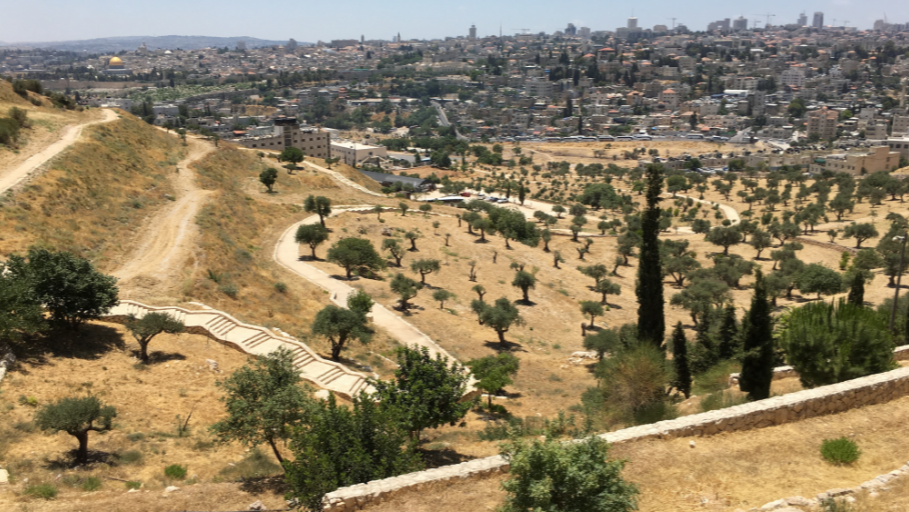I hear the title of this blog asked as a question again and again as I take out my dreydel to spin it, or as I say, “Happy Chanukah” as a holiday greeting to people I meet. There are some who do not know what Hanukah is, and I am glad to relate the meaning of the festival. There are some who are uncomfortable with anything that has religious connotation. For these I am sorry, because I am not trying to ‘convert’ them to Judaism, I am just sharing a festival that brings joy to many (a cultural note and a historic event). Then there are yet others who seem a bit perturbed that I would issue that greeting, because they are Christians and the Jewish holiday is not part of their chosen experience. There exists, among some, ‘if it isn’t in the New Testament, it doesn’t matter.’
 |
| Jerusalem from Mt. Scopus (North) |
And here is where these “New Testament Only” Christians are mistaken. Hanukkah does exist in the New Testament (and even though it is a Jewish holiday, there are no references to this festival in the Old Testament). Here it is, from the Gospel of John 10:22-23, “Then came the Festival of Dedication at Jerusalem. It was winter, and Jesus was in the temple courts walking in Solomon’s Colonnade.” Beyond the Apocrypha, the only Biblical reference to this Jewish festival is in the Gospels.
 |
| Jerusalem from Haas Promenade (South) |
John’s Gospel points out that Jesus knew of and celebrated the festival of Hannukah. This festival is the Feast of Dedication, a holiday to remember when the Hebrew army under the command of Judah Maccabee defeated the Hellenistic forces in Jerusalem to recapture the Temple. As a matter of faith, religion and victory, Judah, his brothers, and the people of Israel were very quick (maybe too quick) to pull together the people and items necessary to re-start Temple worship and the practices of their faith. They rededicated the house of God (therefore the New Testament title for the holiday) with praise and palm branches, and with harps and cymbals and stringed instruments, and with hymns and songs.
 |
| Jerusalem from Pater Noster (East) |
There can be little doubt that Jesus would have lit a menorah for Chanukah. The Talmud (Shabbat 21b) relates that Hillel and Shammai argued about lighting the candles. Hillel believed that a light should be added for each night so the glow would grow throughout the festivities. Shammai believed eight candles should be lighted the first night, and then one less each night in order to remember the offering of bulls during the Feast of Tabernacles. The menorah was placed by the doorpost (as the Mezuzah was placed on the doorpost) in order to declare faith in the God who redeemed Israel.
 |
| Jerusalem from the Tower of David (West) |
The festival of Chanukah contains a story that people of faith can stand behind. It is the recitation of how the household of Mattathias, even when faced with punishment and death, did not neglect the practice of their faith. At the heart of the story is the command by a Hellenistic soldier for Mattathias and his village to bow down to an idol. The village priest and his family refuse to deny their faith.
 |
| A book worth reading! |
I have related some stories of the Maccabee rebellion in the book
Advent Journeys, available as a book, as a
Kindle e-book, and readable through Amazon Prime). If you want to become more personally involved with the Christmas … and the Chanukah story (week 6 of the book), I would encourage taking time to read
Advent Journeys, as a book, on
Kindle, or through Amazon Prime.

No comments:
Post a Comment